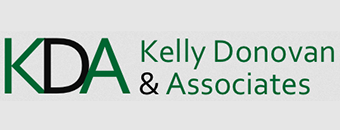The 3 types of resume feedback you’ll get
While putting the finishing touches on a resume or LinkedIn profile, some of my clients get feedback on the documents–some of it solicited, some of it unsolicited.
Over the years, I’ve found that this feedback runs the gamut; some is helpful, some is “happy to glad,” and some is out-of-touch.
“Happy-to-glad” feedback
Some of the feedback you’ll receive is fairly benign, yet inconsequential. You could adopt these suggested changes, but it probably isn’t going to make much of a difference.
Here are some examples:
- Use Helvetica instead of Calibri for the font.
- Say “developed” instead of “formulated.”
- Use “decreased” instead of “reduced.”
Ask yourself if any of those changes would matter to you as a reader. Probably not! They’re as meaningless as the classic example of changing “happy” to “glad.” Yet, many of my clients have received these types of suggestions.
You might be wondering why someone would even bother with a happy-to-glad suggestion. It’s actually very simple: it makes them feel important to provide feedback, and if they don’t see anything substantial to change, they’ll find something… anything.
Out-of-touch feedback
Unfortunately, there’s a lot of outdated resume advice circulating. Self-anointed experts share this advice on LinkedIn and in articles on various websites (some of them otherwise trustworthy). Then, people who don’t know that much about current resume trends and best practices read these tips and articles, believe them to be reliable, and share them with friends and family members.
Then there’s the folks who presumably have some expertise–someone who worked in HR a decade ago, for example. This can be tricky. Hiring trends change a lot, and LinkedIn and resume best practices are constantly evolving.
Then there are the executives, managers, HR people, college career counselors, and even resume writers whose understanding of resume best practices is based on what they learned many years ago–some of which may have been flawed advice even for the time.
So they might think that all resumes should be one page, have an objective at the top, and be black and white only.
There’s also flawed advice circulating about how to make a resume ATS-friendly (for employers’ applicant tracking software). Some of it is based on what was needed back when companies were scanning paper resumes using OCR and primitive ATS, circa 2001.
Also, executives targeting senior leadership team positions and board seats don’t need to worry about ATS, so ATS advice for these candidates isn’t necessary.
On the other hand, there are some people giving advice on resume formatting that actually is problematic for ATS. For a candidate who needs to apply online, this could cause glitches. I often receive resumes that contain formatting that would be unreadable in an ATS.
Helpful feedback
Sometimes we get resume feedback that is truly helpful. A suggestion about a bullet that might be added, for example. Some of the best advice often comes from people who have hired for the roles you’re seeking. In other words, someone at the level of your would-be boss. It might even be a former boss of yours. Just bear in mind that these folks often give a mix of helpful, “happy-to-glad,” and out-of-touch feedback! So you’ll need to be able to separate the wheat from the chaff–that’s something I help my clients do.
In fact, more often than not I find that advice coming from a particular person doesn’t ALL fall under one category. That’s what can make it so tricky–if one suggestion is solid, it’s easy to assume the rest are, too.
This article first appeared on www.KellyDonovan.com



